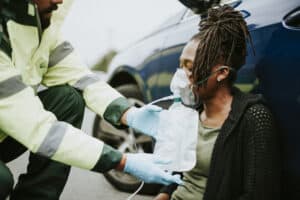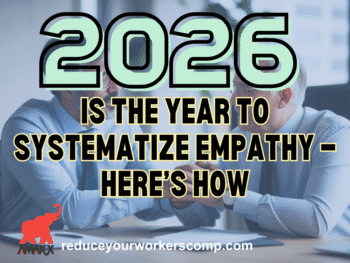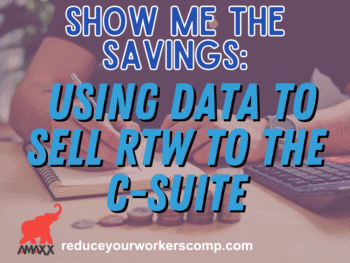There are many things members of the workers’ compensation claim team and other interested stakeholders can do to have a better post-injury response. Having the best possible post-injury response demonstrates a willingness to provide adequate medical care and treatment and help the employee return to work quickly. Many things can be done to provide an effective post-injury response. The essential thing to remember is that it all starts with you.
Post-Injury Triage and Medicare Care
Work injuries occur in even the most safety-conscious work environments – it is human nature. How you deal with the injury after it occurs speaks volumes about a human-oriented workers’ compensation program that puts the employee in a position to receive immediate medical care and start on the road to recovery.
- Access to Immediate First Aid: All employees deserve a workplace with basic first aid supplies. This starts with the employer providing supplies that meet workplace demands and common workplace injuries. It also requires attention to detail by ensuring all employees receive basic training in using those supplies and a willingness to assist an injured employee.
- Use of Telephonic Nurse Triage Services: These services are available 24/7/365 and are staffed by trained nurses. Nurses working for these services can assist people in determining the nature and extent of the work injury and what reasonable medical care is required. These services are cost-effective and can be accessed by anyone within an organization.
- Direction of Medical Care: Employers should consider establishing Preferred Provider Organizations (PPO) contracts with medical providers such as hospitals and doctors. These networks can provide employees with immediate and non-emergency medical care following a work injury. They can plan an important role in post-injury care by providing immediate access to care and assisting in directing care.
Click Link to Access Free PDF Download
“9-Element Blueprint To Create Your Workers’ Comp Employee Brochure”
It requires individuals working together to provide immediate and effective post-injury medical care. Now is the time to consider these options in your workers’ compensation program.
Return to Work Efforts Start Now
Consideration regarding return to work needs to start immediately following a work injury. There are countless reasons to consider an immediate return to work beyond the bottom line of your workers’ compensation program.
- Communication: Employer representatives, members of the claim management team, and employees must communicate regarding return to work-efforts. There should be a primary contact within any organization who can work with supervisors and managers to develop creative options.
- Coordination: Any interested stakeholders are involved when it comes to returning to work. A key factor is the vocational rehabilitation consultant working with the employee. Involve this person and ensure they receive timely responses to case management, medical, and vocational inquiries.
- Compassion: Many physical and psychological barriers are experienced by an employee following a work injury that takes them off work. All interested stakeholders should approach the injured employee empathetically and consistently and persistently help the employee overcome objections.
Practical return-to-work efforts require the proverbial workers’ compensation village. Now is the time to consider how you are working with other interested stakeholders.
Staying in Touch
You (regardless of your position) are needed to stay in touch with an injured employee following a work injury. This is often a stumbling block leading to excessive medical care and prolonged time off work.
- Make regular telephone calls to the employee. This is something best left to a supervisor. The consistent check-in shows that you care and are concerned about the employee’s well-being.
- Send a “get better soon” card. This is something that costs little money and takes even less time. It can serve as a “pick me up” that boosts morale.
- Use compassion and empathy. While it is crucial to trust but verify – visually, being skeptical of an employee in their presence breeds mistrust and conflict.
Keeping in touch with an injured employee can pay dividends in any workers’ compensation program. Consider this a necessary action following any work injury.
Conclusions
An effective return to work starts with you. Consider the areas you can influence in post-injury response, return to work efforts, and keeping in touch with the injured employee. These efforts should remain coordinated with other interested stakeholders to act compassionately toward the injured employee. The ultimate goal is to remove barriers and reduce workers’ compensation program costs by reducing medical expenses and limiting time missed from work. Now is the time to act.

Contact: mstack@reduceyourworkerscomp.com.
Workers’ Comp Roundup Blog: http://blog.reduceyourworkerscomp.com/
©2023 Amaxx LLC. All rights reserved under International Copyright Law.
Do not use this information without independent verification. All state laws vary. You should consult with your insurance broker, attorney, or qualified professional.


















